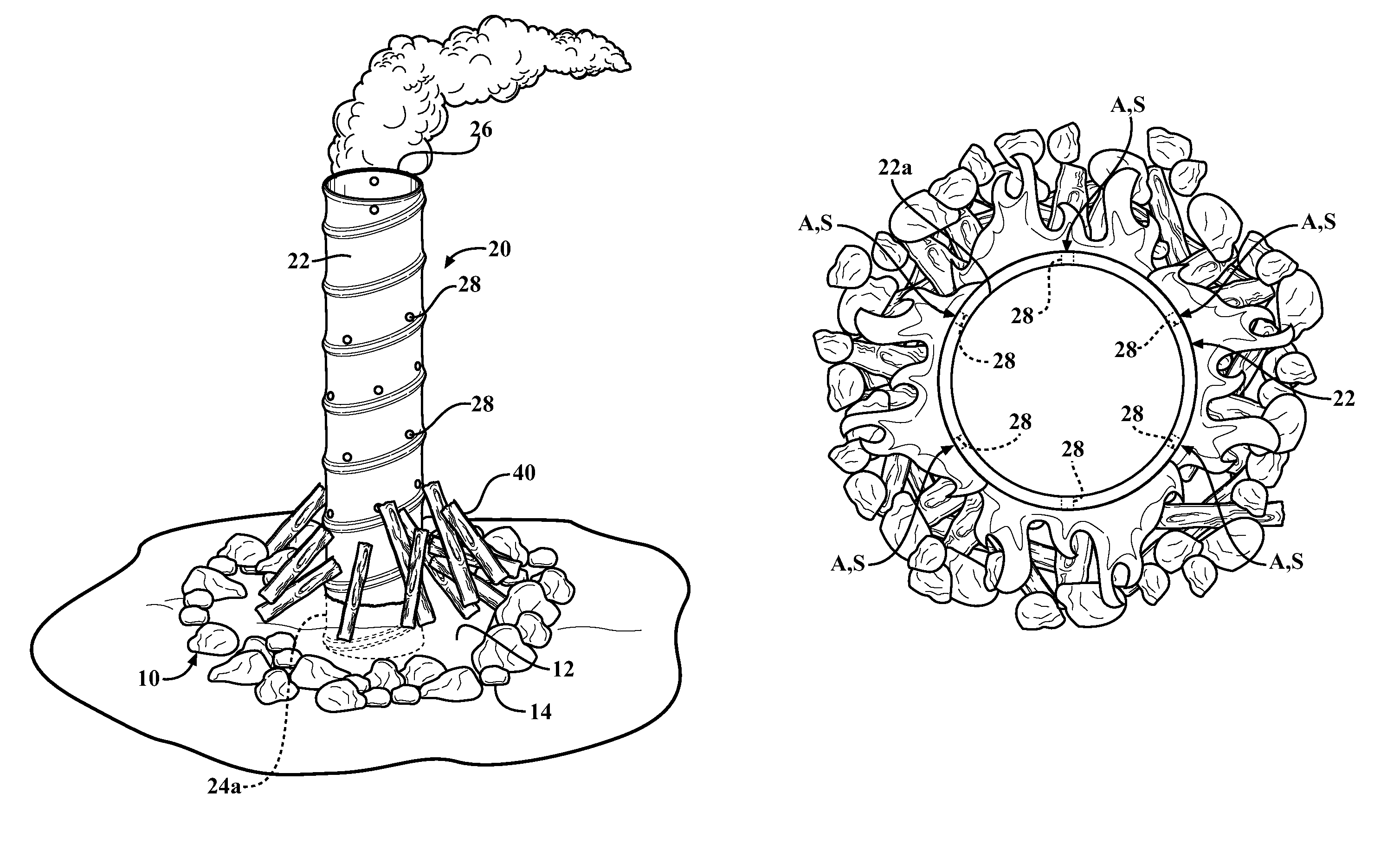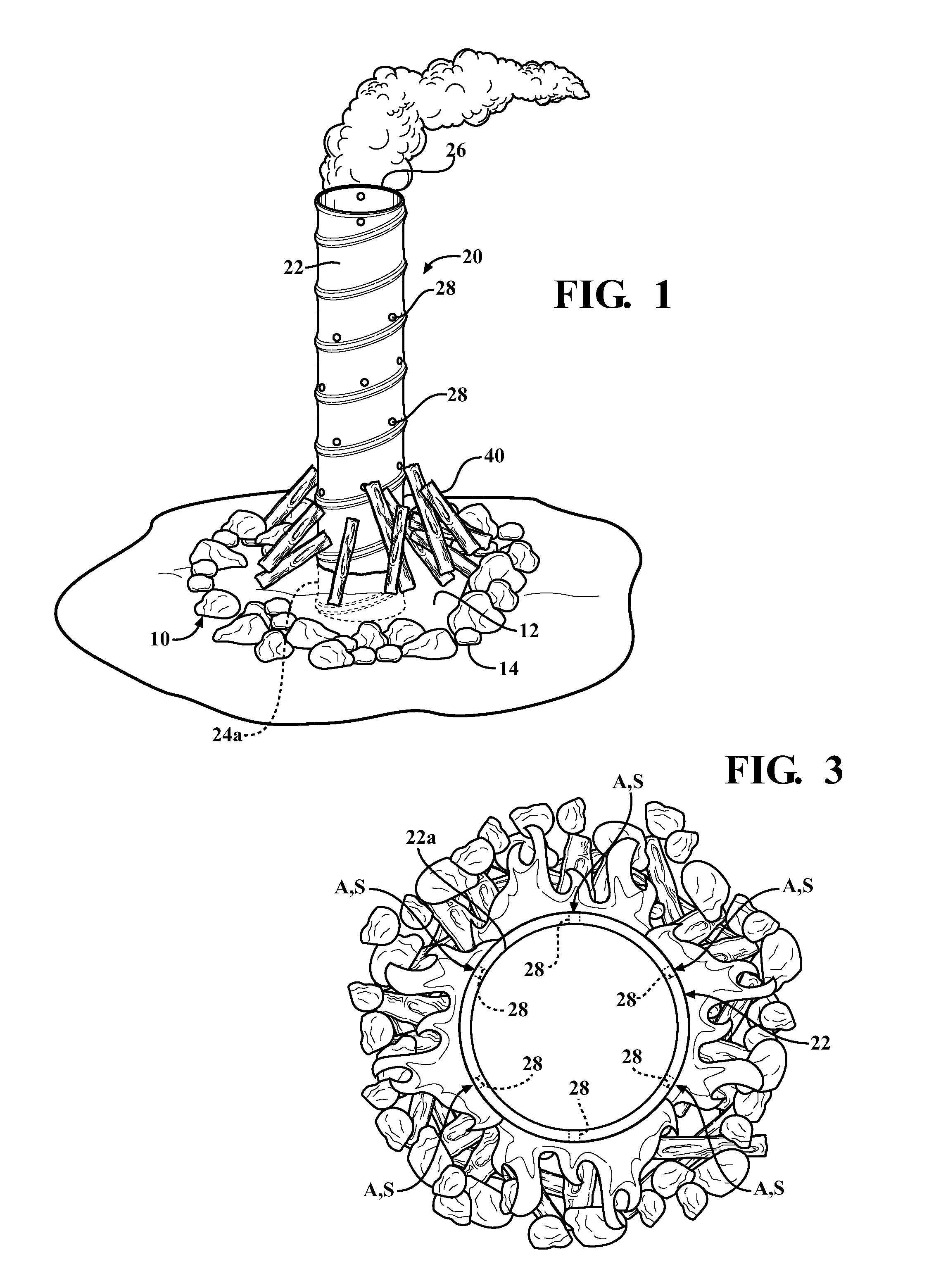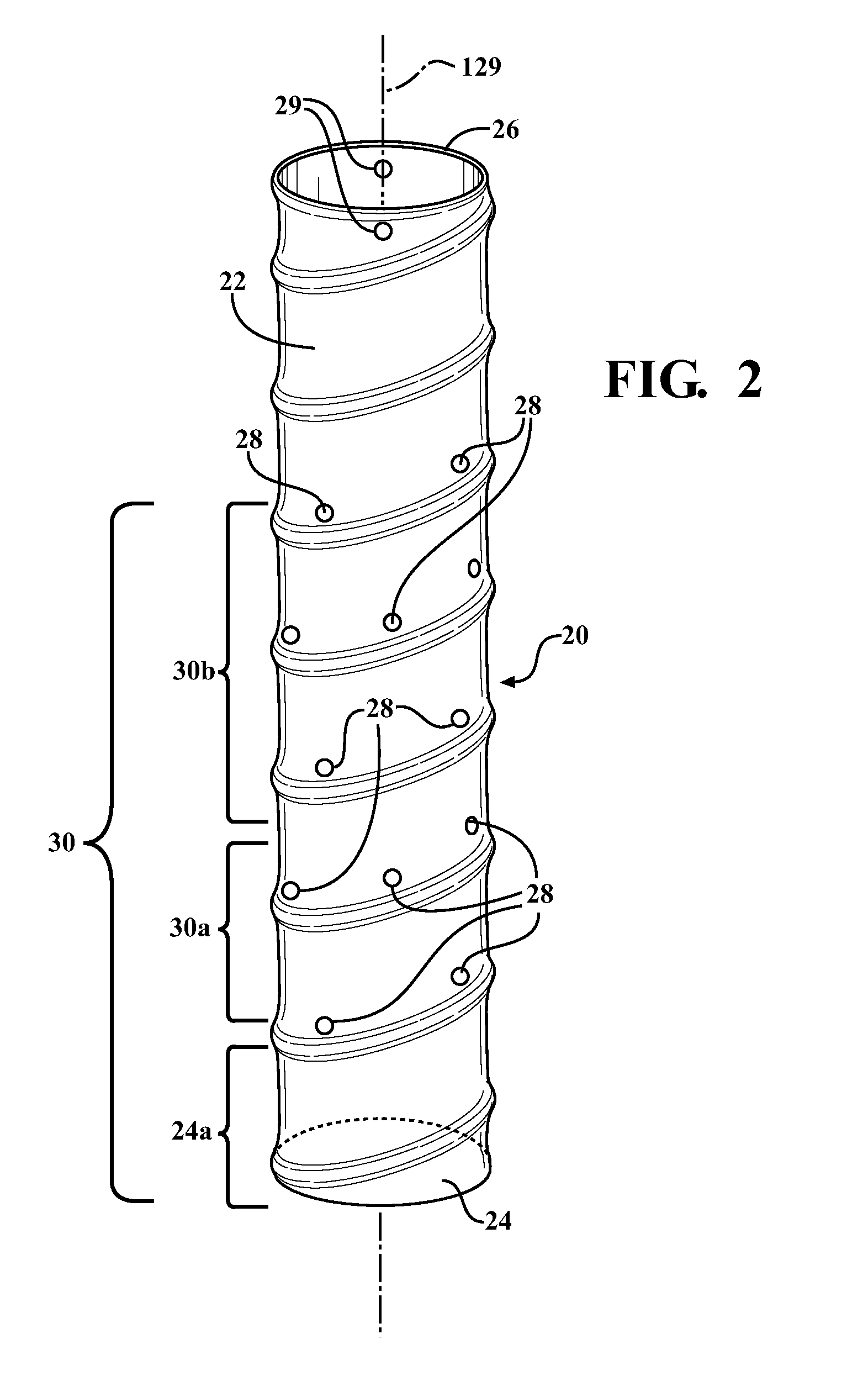Campfire smokestack and method
a technology of a smokestack and a nozzle, which is applied in the direction of domestic stoves or ranges, lighting and heating apparatus, combustion processes, etc., can solve the problems of limiting the size of the fire that it can accommodate, not being suited to use with open, ground-based campfires of decent size, and not being able to meet the needs of campers, so as to improve the efficiency, start and maintain, and improve the effect of efficiency
- Summary
- Abstract
- Description
- Claims
- Application Information
AI Technical Summary
Benefits of technology
Problems solved by technology
Method used
Image
Examples
Embodiment Construction
[0022]Referring first to FIGS. 1 through 3, a campfire smokestack 20 is shown in exemplary form in order to teach how to make and use the claimed invention. Smokestack 20 is formed from a tube 22 of metal, in the illustrated example a four- to five-foot length of light-gauge steel stovepipe, for example in the range of three to six inches in diameter, and preferably strong enough to hold its shape when subjected to the heat of a campfire over one or more seasons of use, although one-time use or short-term use versions are possible using thinner or lighter-gauge materials. The length and diameter of the tube can vary, being shorter or longer and / or wider or narrower than the illustrated example, with corresponding affect on the draft. Tube 22 can be a single long tube or multiple tube sections assembled or telescoped together, without limitation as to how the final elongated tube shape is achieved. Tube 22 preferably has a circular cross-section, but can have other cross-sectional sh...
PUM
 Login to View More
Login to View More Abstract
Description
Claims
Application Information
 Login to View More
Login to View More - R&D
- Intellectual Property
- Life Sciences
- Materials
- Tech Scout
- Unparalleled Data Quality
- Higher Quality Content
- 60% Fewer Hallucinations
Browse by: Latest US Patents, China's latest patents, Technical Efficacy Thesaurus, Application Domain, Technology Topic, Popular Technical Reports.
© 2025 PatSnap. All rights reserved.Legal|Privacy policy|Modern Slavery Act Transparency Statement|Sitemap|About US| Contact US: help@patsnap.com



